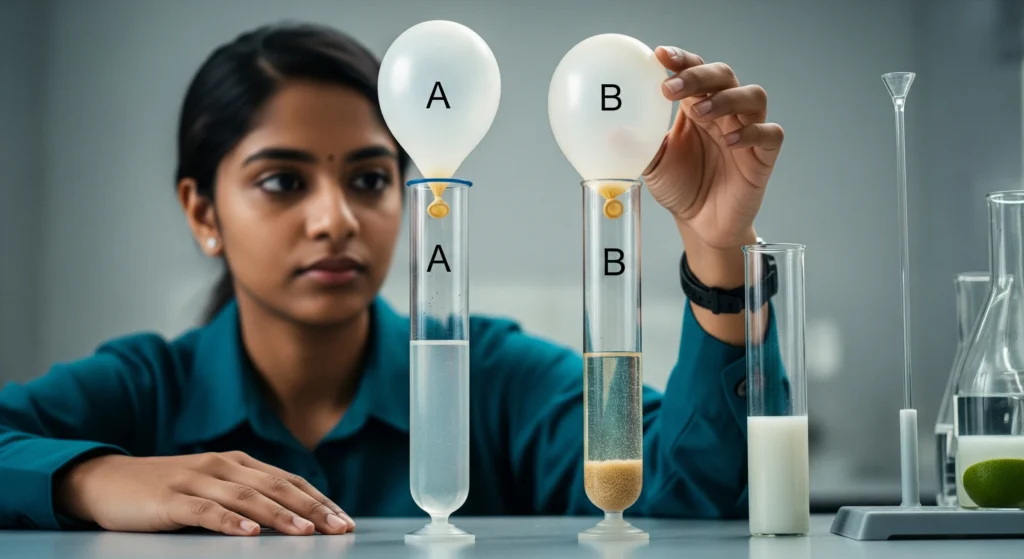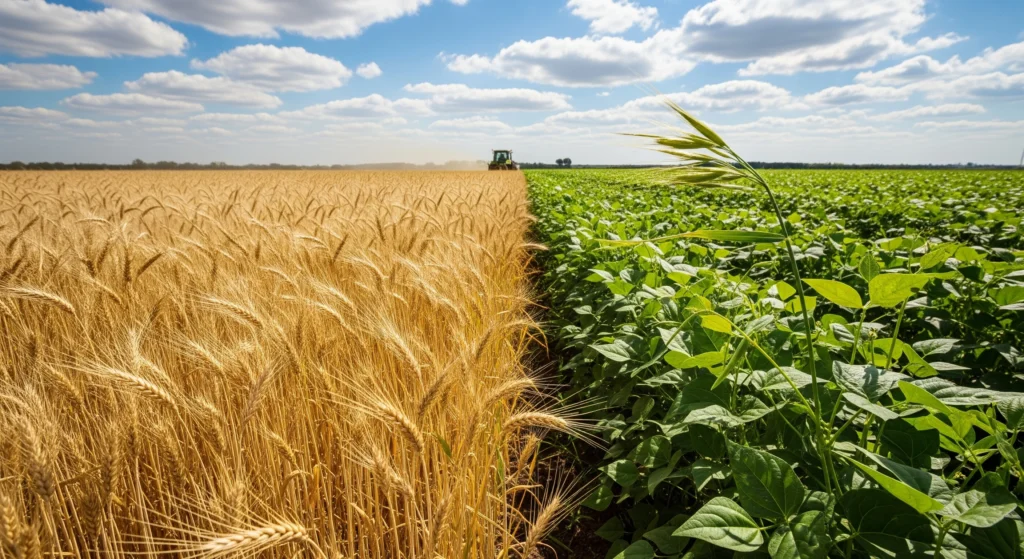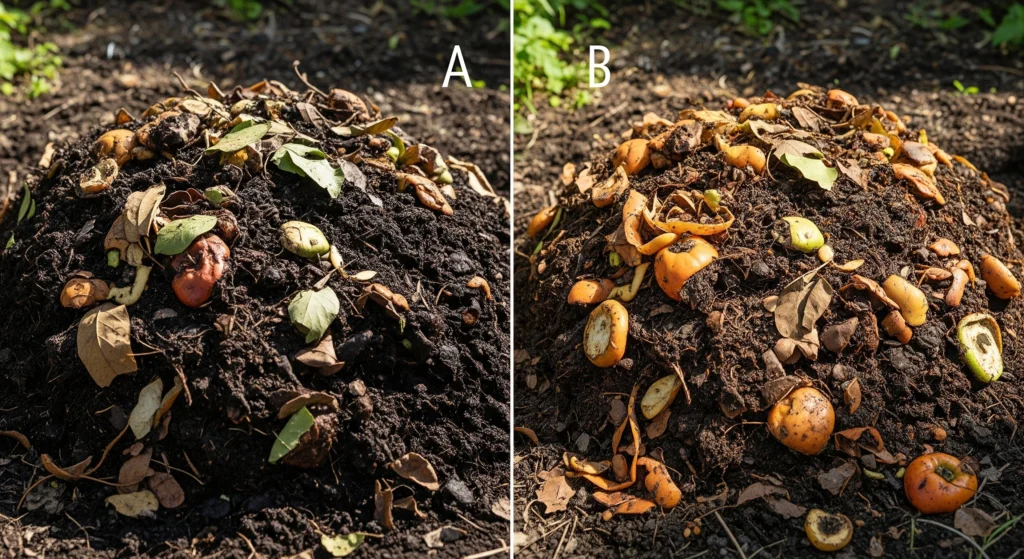Last Updated on August 30, 2025 by XAM CONTENT
Hello students, we are providing case study questions for class 8 Science. Case study questions are the new question format that is introduced in CBSE board. The resources for case study questions are very less. So, to help students we have created chapterwise case study questions for class 8 Science. In this article, you will find case study questions for cbse class 8 Science chapter 2 The Invisible Living World.
| Chapter | The Invisible Living World |
| Book | Curiosity: Textbook of Science for Grade 8 |
| Type of Questions | Case Study Questions |
| Nature of Questions | Competency Based Questions |
| Board | CBSE |
| Class | 8 |
| Subject | Science |
| Useful for | Class 8 Studying Students |
| Answers provided | Yes |
| Difficulty level | Mentioned |
| Important Link | Class 8 Science Chapterwise Case Study |
Case Study Questions on The Invisible Living World
Case Study Question 1
Passage: The Mystery of the Inflated Balloon
Aanandi conducted an experiment. She placed sugar solution in two test tubes, A and B. She added yeast only in test tube B. She fixed balloons to the mouths of both test tubes and left them in a warm place. After 3 days, she found that the balloon on test tube B had inflated, while the balloon on test tube A did not. Later, she transferred the gas from balloon B into a test tube containing lime water, which turned milky.

Q1.1 Why did the balloon on test tube B inflate?
Q1.2 Which gas was produced that made lime water turn milky?
Q1.3 What is the role of yeast in this experiment?
Answer & Explanation:
- A1.1 The balloon on test tube B inflated because yeast carried out fermentation of the sugar solution, releasing a gas.
- A1.2 The gas produced was carbon dioxide (CO₂), which turned lime water milky by forming insoluble calcium carbonate.
- A1.3 Yeast acted as a microorganism that converted sugar into alcohol and CO₂ through anaerobic respiration. This shows how yeast helps in fermentation, which is useful in baking and brewing.
Case Study Question 2
Passage: The Farmer’s Choice
Two farmers grew crops in neighboring fields. Farmer X planted wheat and added nitrogen-rich fertilizers to increase yield. Farmer Y planted beans but did not use any nitrogen fertilizers, yet her crops grew well.

Q2.1 Why did Farmer Y not add nitrogen fertilizers?
Q2.2 Which microorganisms were helping her bean plants?
Q2.3 How do these microorganisms improve soil fertility?
Answer & Explanation:
- A2.1 Farmer Y did not add fertilizers because beans (leguminous plants) naturally improve soil nitrogen levels.
- A2.2 Rhizobium bacteria present in root nodules of beans helped fix atmospheric nitrogen.
- A2.3 Rhizobium converts atmospheric nitrogen into soluble nitrogen compounds (like nitrates), which enrich the soil and make it fertile. This is why crop rotation with legumes reduces the need for chemical fertilizers.
Case Study Question 3
Passage: From Waste to Manure
Snehal dug two pits in her garden. In pit A, she put fruit and vegetable peels mixed with dried leaves. In pit B, she dumped the same waste without adding dried leaves. After 3 weeks, she observed that pit A had dark, manure-like material, while pit B still contained rotting waste.

Q3.1 Why did pit A form manure more effectively than pit B?
Q3.2 Which microorganisms are mainly responsible for manure formation?
Q3.3 How does this process benefit the environment?
Answer & Explanation:
- A3.1 Pit A formed manure more effectively because the mixture of green waste (peels) and brown waste (dried leaves) provided the right balance of nutrients and air circulation for microorganisms to decompose the material.
- A3.2 Bacteria and fungi were the main decomposers breaking down organic matter into simple, nutrient-rich substances.
- A3.3 This process reduces waste, recycles nutrients back into the soil, improves soil fertility, and keeps the environment clean by natural decomposition.
Related Posts
👉 The Invisible Living World Assertion Reason Questions
👉 The Invisible Living World MCQ Questions
👉 The Invisible Living World NCERT Solutions
Also check
- Curiosity Class 8 Science Chapter 13 Our Home: Earth, a Unique Life Sustaining Planet Case Study Questions
- Curiosity Class 8 Science Chapter 12 How Nature Works in Harmony Case Study Questions
- Curiosity Class 8 Science Chapter 11 Keeping Time with the Skies Case Study Questions
- Curiosity Class 8 Science Chapter 10 Light: Mirrors and Lenses Case Study Questions
- Curiosity Class 8 Science Chapter 9 The Amazing World of Solutes, Solvents, and Solutions Case Study Questions
- Curiosity Class 8 Science Chapter 8 Nature of Matter: Elements, Compounds, and Mixtures Case Study Questions
- Curiosity Class 8 Science Chapter 7 Particulate Nature of Matter Case Study Questions
- Curiosity Class 8 Science Chapter 6 Pressure, Winds, Storms, and Cyclones Case Study Questions
- Curiosity Class 8 Science Chapter 5 Exploring Forces Case Study Questions
- Curiosity Class 8 Science Chapter 4 Electricity: Magnetic and Heating Effects Case Study Questions
- Curiosity Class 8 Science Chapter 3 Health: The Ultimate Treasure Case Study Questions
- Curiosity Class 8 Science Chapter 2 The Invisible Living World Case Study Questions
- Curiosity Class 8 Science Chapter 1 Exploring the Investigative World of Science Case Study Questions
🚀 Boost Your Exam Prep: Get case study questions for all subjects (Class 6-12) now!
👉 Explore more resources on CBSE Class 8

Topics from which case study questions may be asked
- Fermentation and Yeast Activity
- Nitrogen Fixation in Legumes
- Decomposition & Manure Formation
- Food Preservation and Spoilage
- Curd Formation (Lactobacillus)
Main Topics in the Chapter
- Discovery of the Invisible World – Invention of lenses and microscope, work of Robert Hooke and Antonie van Leeuwenhoek.
- What is a Cell? – Basic unit of life; observation of onion peel and cheek cells.
- Parts of a Cell – Cell wall, cell membrane, cytoplasm, nucleus, plastids, vacuoles, mitochondria.
- Variation in Shape and Structure of Cells – Muscle cells, nerve cells, and their functions.
- Levels of Organisation in Living Organisms – Cell → Tissue → Organ → Organ system → Organism.
- Introduction to Microorganisms – Unicellular and multicellular microbes (bacteria, fungi, protozoa, algae).
- Observation of Microorganisms – Activities using pond water, soil suspension, and foldscope.
- Beneficial Roles of Microorganisms –
- Decomposition & Cleaning Environment – Making manure, recycling nutrients.
- Biogas Production – Microbes producing methane as fuel.
- Food Production – Role of yeast in baking, Lactobacillus in curd, fermentation in idli/dosa/bhatura.
- Nitrogen Fixation – Rhizobium in legume roots improving soil fertility.
- Microalgae – Producers of oxygen, food supplements (Spirulina, Chlorella).
- Harmful Effects of Microorganisms – Food spoilage, disease-causing microbes (briefly mentioned).
- Why Cell is the Basic Unit of Life – All living organisms made up of cells; unicellular vs multicellular life.
- Snapshots & Recap – Key points summarizing microorganisms, cell structure, beneficial microbes.
Important Keywords
- Lens – A piece of curved glass that makes small things look bigger.
- Microscope – A tool that helps us see objects too small for the naked eye.
- Cell – The smallest unit of life that makes up all living organisms.
- Cell Wall – A strong outer covering found in plant cells that gives shape and support.
- Cell Membrane – A thin layer around the cell that allows materials in and out.
- Cytoplasm – Jelly-like material inside the cell where life processes occur.
- Nucleus – The control center of the cell that regulates its activities.
- Plastids – Tiny structures in plant cells (e.g., chloroplasts) that help in photosynthesis and storage.
- Vacuole – A storage sac inside cells, large in plants and small in animals.
- Mitochondria – The powerhouse of the cell that produces energy.
- Tissue – A group of similar cells that perform a specific function.
- Organ – A structure made of different tissues that perform a function (e.g., heart, leaf).
- Organ System – A group of organs working together (e.g., digestive system).
- Organism – A complete living being (plant, animal, or microorganism).
- Microorganisms / Microbes – Living organisms too small to be seen without a microscope (e.g., bacteria, fungi).
- Unicellular – An organism made of only one cell (e.g., Amoeba, bacteria).
- Multicellular – An organism made of many cells (e.g., humans, plants).
- Bacteria – Single-celled microorganisms, some helpful and some harmful.
- Fungi – Organisms like mould, yeast, and mushrooms, which may be unicellular or multicellular.
- Protozoa – Single-celled microorganisms like Amoeba and Paramecium.
- Algae – Simple plant-like organisms that contain chlorophyll.
- Virus – Microorganisms that reproduce only inside host cells and cause diseases.
- Rhizobium – Nitrogen-fixing bacteria found in root nodules of legumes.
- Fermentation – The process in which microorganisms (like yeast, bacteria) convert sugars into alcohol, acids, or gases.
- Lactobacillus – A bacterium that converts milk into curd.
- Yeast – A type of fungus used in making bread, cakes, and other fermented foods.
- Decomposer – Microorganisms that break down dead plants and animals into simpler substances.
- Biogas – A fuel (mainly methane) produced by microorganisms breaking down organic waste in the absence of oxygen.
- Spirulina – A microalga rich in proteins and vitamins, known as a superfood.
Download Customised White Label Study Materials in MS Word Format
We are providing teaching resources to teachers and coaching institute looking for customised study materials in MS word format. Our High-quality editable study material which is prepared by the expert faculties are Highly useful for Teachers, Mentors, Tutors, Faculties, Coaching Institutes, Coaching Experts, Tuition Centers.
Frequently Asked Questions (FAQs) on The Invisible Living World Case Study Questions
Q1: What are case study questions in The Invisible Living World?
A1: These are competency-based questions based on real-life situations and concepts from The Invisible Living World.
Q2: Are case study questions part of Class 8 Science CBSE exams?
A2: Yes, CBSE includes such questions in line with NEP guidelines.
Q3: Why is the cell called the basic unit of life?
A3: Every living organism is made up of cells. All life processes like respiration, growth, and reproduction occur inside cells. Just like bricks make up a wall, cells make up an organism. That’s why the cell is called the basic unit of life
Q4: How does yeast make dough rise?
A4: Yeast ferments the sugars in dough, releasing carbon dioxide gas. The gas forms bubbles in the dough, making it soft, fluffy, and spongy. This process is used in making bread, cakes, and bhaturas
Q5: Why do farmers grow legumes like beans or peas without adding nitrogen fertilizers?
A5: Roots of legumes have nodules that contain Rhizobium bacteria. These bacteria fix nitrogen from the air and convert it into compounds plants can use. This naturally increases soil fertility without chemical fertilizers
Q6: How do microorganisms help in cleaning the environment?
A6: Microorganisms such as bacteria and fungi decompose dead plants, animals, and waste into simple nutrients. This not only reduces waste but also recycles nutrients back into the soil, improving soil fertility.
Q7: Why does milk turn into curd faster in warm conditions?
A7: In warm conditions, bacteria like Lactobacillus multiply quickly and convert the milk sugar (lactose) into lactic acid. The lactic acid makes the milk sour and thick, turning it into curd. In colder conditions, bacteria grow slowly, so curd takes longer to form
Q8: Are there any online resources or tools available for practicing class 8 science curiosity “The Invisible Living World” case study questions?
A8: We provide case study questions for CBSE Class 8 Science Curiosity on our website. Students can visit the website and practice sufficient case study questions and prepare for their exams. If you need more case study questions, then you can visit Physics Gurukul website. they are having a large collection of case study questions for all classes.



